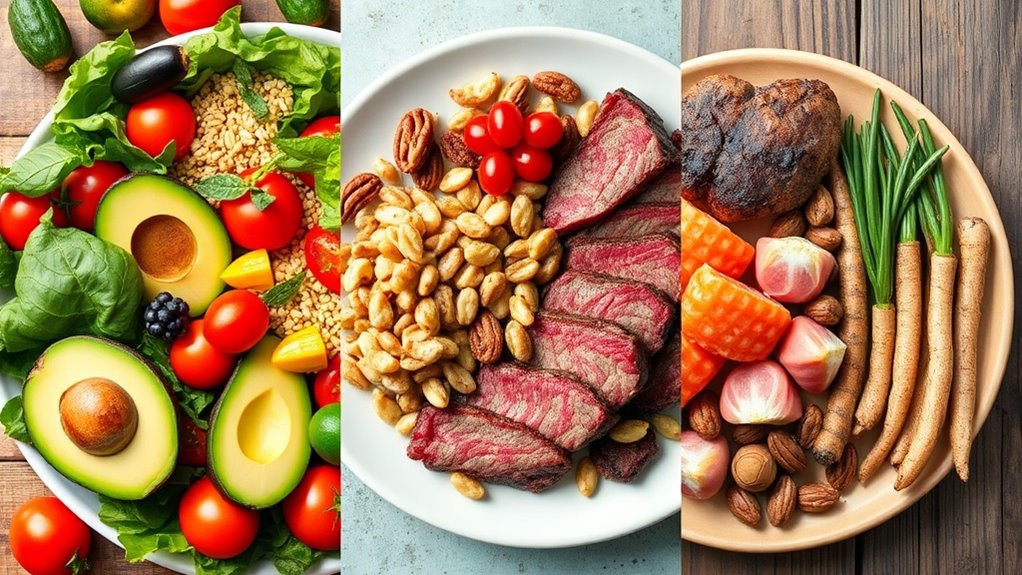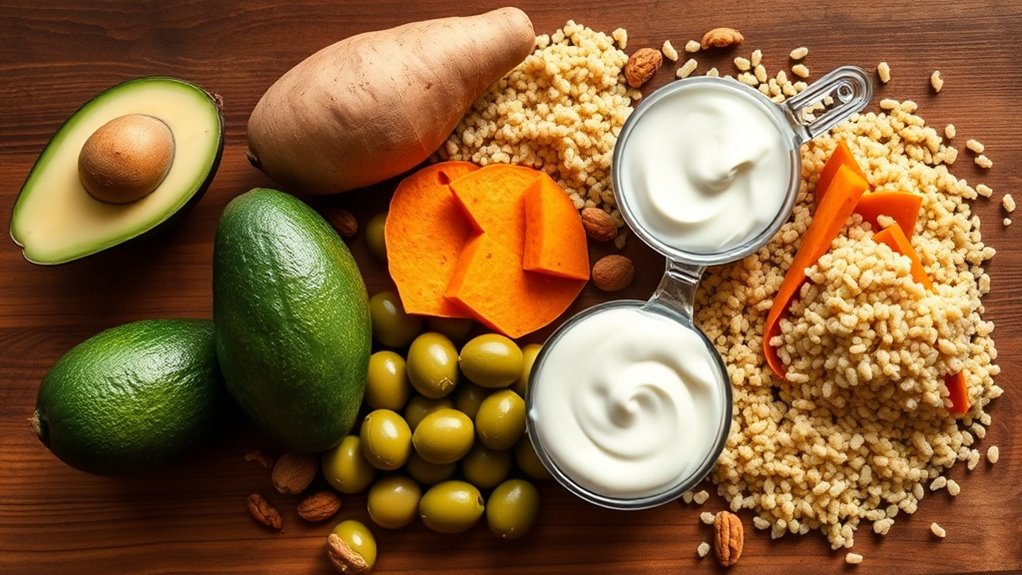Fasting vs. Keto-Which One Burns Fat Faster.
When it comes to fat loss, you might find yourself weighing the benefits of fasting against the ketogenic diet. Each approach has its unique strengths, whether it’s the quick initial results of fasting or the steady, sustainable progress offered by keto. But which method truly burns fat faster? Understanding the mechanics behind each can help you make an informed choice that aligns with your lifestyle and goals. Let’s explore the details further.
Overview of Intermittent Fasting
When you think about effective weight loss strategies, intermittent fasting often comes to mind as a powerful approach. This method isn’t just about what you eat; it focuses on when you eat. By creating defined eating windows, you give your body time to burn fat and improve metabolism.
Many people find that shorter fasting periods, like 16/8, work best for them, allowing for an easier transition while still enjoying meals.
You’re not alone in this journey—countless others are discovering the benefits of intermittent fasting together. It can foster a sense of community, whether you’re sharing tips online or joining local groups.
Plus, some find it liberating to simplify their eating habits. As you explore intermittent fasting, remember it’s about finding a rhythm that suits your lifestyle, making it sustainable and enjoyable. Staying hydrated during fasting can further enhance your experience and help manage hunger effectively.
Embrace the challenge, and you might just find a newfound sense of belonging in this shared experience.
Understanding the Ketogenic Diet
The ketogenic diet, often referred to as keto, emphasizes a low-carbohydrate, high-fat approach that can help you achieve fat loss more efficiently. By significantly reducing carbs and replacing them with fats, your body enters a state called ketosis, where it burns fat for energy instead of glucose.
This shift can lead to quick weight loss, improved energy levels, and reduced hunger.
As you embrace keto, you’ll find a community that shares tips, recipes, and support, making you feel right at home. You’ll enjoy delicious foods like avocados, nuts, and fatty cuts of meat while steering clear of bread and pasta.
Many people report mental clarity and stable energy throughout the day, which can enhance your overall well-being. It’s important to focus on healthy fats to ensure you’re getting the right nutrients while following this diet.
If you’re looking for a lifestyle that fosters connection and encourages a healthier you, the ketogenic diet might just be the perfect fit.
Mechanisms of Fat Loss in Fasting
Fasting operates on a different principle compared to the ketogenic diet, yet both can be effective for fat loss. When you fast, your body shifts its energy source from glucose to stored fat. This transition begins once your glycogen stores are depleted, usually after 12 to 16 hours without food. During this time, your insulin levels drop, promoting fat breakdown and mobilization.
Additionally, fasting triggers autophagy, a process where your body cleans out damaged cells and regenerates new ones. This not only supports overall health but also enhances your metabolic efficiency. You might also experience an increase in norepinephrine, a hormone that boosts fat burning.
As you embrace fasting, you’ll likely find a deeper connection to your body’s natural hunger cues. This awareness can foster a sense of belonging within a community that values health and wellness. However, keep in mind that nutrient deficiencies may arise if meal composition is not carefully monitored.
It’s about more than just losing weight; it’s about nourishing your body and spirit.
Mechanisms of Fat Loss in Keto
Although the ketogenic diet differs from fasting, it also promotes fat loss through metabolic shifts. When you adopt a keto lifestyle, your body enters a state called ketosis. In this state, your body starts burning fat for fuel instead of carbohydrates. This shift happens because your carb intake is significantly reduced, prompting your liver to convert fats into ketones, which serve as an alternative energy source.
As you embrace this low-carb approach, you’ll likely notice decreased hunger and cravings, making it easier to stick to your eating plan.
Plus, the higher fat intake can lead to better satiety, so you feel more satisfied after meals.
Additionally, ketosis can enhance your energy levels, giving you the drive to stay active.
When you combine these factors, you create a supportive environment for fat loss, allowing you to align with others on the same journey towards feeling healthier and more vibrant. Moreover, managing cortisol levels effectively through stress-reducing activities can further aid in your weight loss efforts while on a keto diet.
Comparing Results: Which Method Burns Fat Faster?
Which method truly accelerates fat loss: fasting or keto? When comparing results, it’s essential to understand the unique benefits of each approach. Fasting can lead to rapid initial weight loss, mainly due to water loss and reduced caloric intake, while keto promotes steady fat loss through ketosis.
Here’s a quick comparison:
| Feature | Fasting | Keto |
|---|---|---|
| Initial Results | Rapid weight loss | Steady fat loss |
| Sustainability | Short-term adherence | Long-term lifestyle change |
| Energy Levels | May fluctuate | Typically stable and high |
Ultimately, the effectiveness of each method depends on your lifestyle and preferences. If you crave structure, keto might fit better. But if you value flexibility, fasting could be your go-to. Both methods have their merits, so choose the one that resonates with you, and you’ll likely find success! Moreover, understanding scientific insights about each method can help you make informed choices regarding your health journey.




